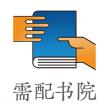
计算机英语【正版新书】
正版新书出版社直发可开发票,支持7天无理由
¥ 37.4 7.6折 ¥ 49 全新
库存4件
江苏无锡
认证卖家担保交易快速发货售后保障
作者邱仲潘 等 编著
出版社清华大学出版社
ISBN9787302462552
出版时间2017-06
装帧平装
开本16开
定价49元
货号1201507268
上书时间2024-06-27
- 在售商品 暂无
- 平均发货时间 14小时
- 好评率 暂无
- 最新上架
商品详情
- 品相描述:全新
- 商品描述
-
目录
Chapter 1 PC Basic/1
1.1 Storage 1
1.2 Outer Hardware 3
1.3 Smartphone, Tablet and Laptop 5
1.4 Exercise 1 7
1.5 Further Reading: Flash Memory 8
1.5.1 The Basics 8
1.5.2 Removable Flash Memory Cards 9
1.5.3 SmartMedia 10
1.5.4 CompactFlash 10
Chapter 2 How Computer Monitors Work/12
2.1 The Basics 12
2.1.1 Display Technology Background 13
2.1.2 Display Technologies: VGA 13
2.1.3 Display Technology: DVI 13
2.1.4 Viewable Area 14
2.1.5 Maximum Resolution and Dot Pitch 14
2.1.6 Dot Pitch 14
2.1.7 Refresh Rate 15
2.1.8 Color Depth 16
2.1.9 Power Consumption 17
2.1.10 Monitor Trends: Flat Panels 17
2.2 Exercise 2 18
2.3 Further Reading: Liquid Crystal Display 19
2.3.1 Brief History 21
2.3.2 Transmissive and Reflective Displays 21
2.3.3 Color Displays 21
2.3.4 Passive-matrix and Active-matrix 22
2.3.5 Quality Control 22
2.3.6 Zero-power Displays 23
2.3.7 Drawbacks 23
Chapter 3 How Cell Phones Work/ 25
3.1 Cell-phone Frequencies 25
3.2 Cell-phone Channels 27
3.3 Analog Cell Phones 28
3.4 Along Comes Digital 29
3.5 Inside a Digital Cell Phone 29
3.6 Exercise 3 32
3.7 Further Reading: Cell Phone 33
3.7.1 History 33
3.7.2 Handsets 35
Chapter 4 Digital Camera Basics/ 40
4.1 How does Digital Camera Work 40
4.2 CCD and CMOS: Filmless Cameras 40
4.3 Digital Camera Resolution 41
4.4 Capturing Color 43
4.5 Digital Photography Basics 43
4.6 Megapixel Ratings 44
4.7 Digital Camera Settings and Modes 44
4.8 Shutter Speed 45
4.9 Exercise 4 47
4.10 Further Reading: How to Take Good Photos 48
4.10.1 Digital Camera Problems 49
4.10.2 Image Editing Software 50
Chapter 5 How Bits and Bytes Work / 53
5.1 Decimal Numbers 53
5.2 Bits 54
5.3 Bytes 55
5.4 Bytes: ASCII 55
5.5 Standard ASCII Character Set 56
5.6 Lots of Bytes 57
5.7 Binary Math 57
5.8 Quick Recap 58
5.9 Exercise 5 58
5.10 Further Reading: How Boolean Logic Works 60
5.10.1 Simple Gates 60
5.10.2 Simple Adders 63
5.10.3 Flip Flops 66
5.10.4 Implementing Gates 68
Chapter 6 Microprocessors / 71
6.1 Microprocessor History 71
6.2 Microprocessor Progression 72
6.3 Inside a Microprocessor 73
6.4 Microprocessor Instructions 75
6.5 Decoding Microprocessor Instructions 78
6.6 Microprocessor Performance 79
6.7 Microprocessor Trends 79
6.8 64-bit Processors 80
6.9 Exercise 6 81
6.10 Further Reading: E-commerce 82
6.10.1 Commerce 83
6.10.2 The Elements of Commerce 84
6.10.3 Why the Hype 85
6.10.4 The Dell Example 86
6.10.5 The Lure of E-commerce 87
6.10.6 Easy and Hard Aspects of E-commerce 89
6.10.7 Building an E-commerce Site 89
6.10.8 Affiliate Programs 90
6.10.9 Implementing an E-commerce Site 90
Chapter 7 Application Software/ 92
7.1 What is Software 92
7.2 Programming Languages 92
7.2.1 Assemblers 92
7.2.2 Compilers and Interpreters 93
7.2.3 Nonprocedural Languages 94
7.3 Libraries 94
7.4 The Program Development Process 95
7.4.1 Problem Definition 95
7.4.2 Planning 95
7.4.3 Writing the Program 96
7.4.4 Debug and Documentation 96
7.4.5 Maintenance 96
7.5 Writing your Own Programs 97
7.6 Exercise 7 98
7.7 Further Reading: Computer Software 99
7.7.1 Relationship to Hardware 99
7.7.2 System and Application Software 100
7.7.3 Users See Three Layers of Software 100
7.7.4 Software Creation 101
7.7.5 Software in Operation 101
7.7.6 Software Reliability 101
7.7.7 Software Patents 101
7.7.8 System Software 101
Chapter 8 Compiler/ 103
8.1 Introduction and History 103
8.2 Types of Compilers 104
8.3 Compiled vs. Interpreted Languages 105
8.4 Compiler Design 105
8.5 Compiler Front End 106
8.6 Compiler Back End 106
8.7 Exercise 8 108
8.8 Further Reading: Assembly Language 109
8.8.1 Assemblers 110
8.8.2 Assembly Language 111
8.8.3 Machine Instructions 112
8.8.4 Assembly Language Directives 113
8.8.5 Usage of Assembly Language 114
8.8.6 Cross Compiler 115
8.8.7 Compiling a Gcc Cross Compiler 115
Chapter 9 How Java Works/ 116
9.1 A Little Terminology 116
9.2 Downloading the Java Compiler 117
9.3 Your First Program 119
9.4 Understanding What Just Happened 121
9.5 Exercise 9 124
9.6 Further Reading: How Perl Works 125
9.6.1 Getting Started 125
9.6.2 Hello World 126
9.6.3 Variables 127
9.6.4 Loops and Ifs 128
9.6.5 Functions 129
9.6.6 Reading 130
Chapter 10 Database & C++/ 131
10.1 Text 131
10.2 Exercise 10 134
10.3 Further Reading: C++ 135
10.3.1 Technical Overview 136
10.3.2 Features Introduced in C++ 136
10.3.3 C++ Library 137
10.3.4 Object-oriented Features of C++ 137
10.3.5 Design of C++ 140
10.3.6 History of C++ 141
10.3.7 C++ is not a Superset of C 143
Chapter 11 Artifi Intelligence/ 145
11.1 Overview 145
11.2 Strong AI and Weak AI 145
11.2.1 Strong Artifi Intelligence 146
11.2.2 Weak Artifi Intelligence 146
11.2.3 Philosophical Criticism and Support of Strong AI 146
11.3 History Development of AI Theory 148
11.4 Experimental AI Research 149
11.5 Exercise 11 151
11.6 Further Reading: Alan Turing 153
11.6.1 Childhood and Youth 153
11.6.2 College and his Work on Computability 154
11.6.3 Cryptanalysis (Code Breaking) 155
11.6.4 Work on Early Computers and the Turing Test 156
11.6.5 Work on Pattern Formation and Mathematical Biology 157
11.6.6 Prosecution for Homosexuality and Turing’s Death 157
Chapter 12 Machine Learning/158
12.1 Overview 159
12.1.1 Types of problems and tasks 159
12.1.2 History and relationships to other fields 160
12.1.3 Theory 161
12.1.4 Approaches 162
12.2 Exercise 12 166
12.3 Further Reading: Applications for machine learning 168
12.3.1 Adaptive websites 168
12.3.2 Affective computing 168
12.3.3 Bioinformatics 168
12.3.4 Brain-machine interfaces 169
12.3.5 Cheminformatics 169
12.3.6 Classifying DNA sequences 169
12.3.7 Computational anatomy 170
12.3.8 Computational finance 171
12.3.9 Computer
相关推荐
— 没有更多了 —






















以下为对购买帮助不大的评价